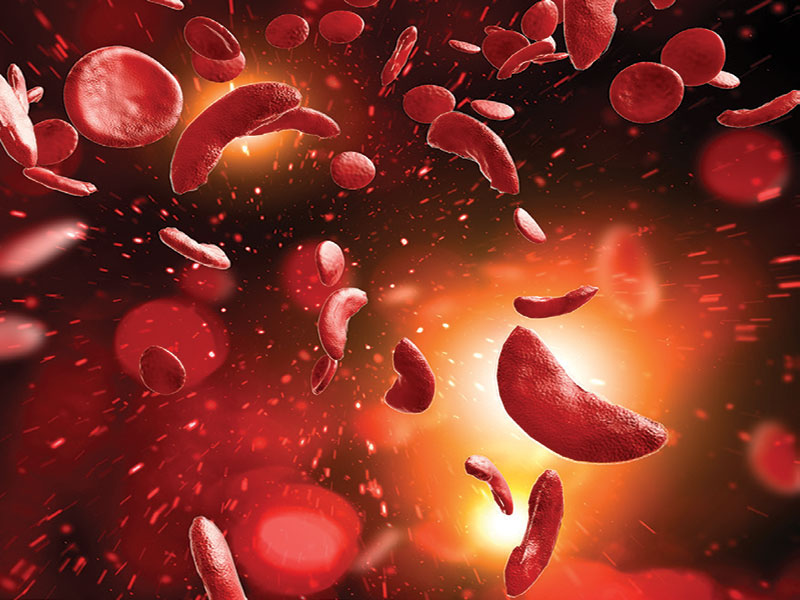
DiYES International School – Sickle Cell Disease (SCD) affects millions of children worldwide. It is a genetic condition that causes the red blood cells to form abnormally. Children living with this disease face unique challenges, and their journey is one filled with both hardship and hope. SCD can cause painful episodes, frequent hospital visits, and long-term health complications. However, with the right care, many children can lead fulfilling lives. This article explores the experiences of children living with Sickle Cell Disease and the vital support they need along the way.
Sickle Cell Disease is a hereditary condition that changes the shape of red blood cells. Normally, red blood cells are round and flexible, but in children with SCD, the cells become rigid and crescent-shaped. These sickle cells block blood flow, which can lead to painful episodes known as “sickle cell crises.” These crises often occur without warning and can cause severe pain, typically in the chest, abdomen, or joints.
Sickle Cell Disease affects children from a very young age. Symptoms may appear in the first year of life. They often include fatigue, swelling, and episodes of pain. Over time, the condition can also damage organs such as the heart, kidneys, and lungs. Early diagnosis and treatment are crucial in managing SCD and preventing complications.
“Read about: What Parents Need to Know About Impetigo in Children”
Pain is one of the most common symptoms that children with SCD experience. These painful episodes, known as vaso-occlusive crises, occur when the sickle-shaped cells block blood flow. Pain can vary in intensity and duration, and it often requires hospitalization. The pain can occur in various parts of the body, including the bones, joints, and organs.
For children, coping with pain is particularly challenging. The constant worry about when the next crisis might occur can be stressful for both the child and their family. Pain management is an essential part of treatment for SCD. Doctors may recommend medications and therapies to manage pain and reduce its frequency.
Regular medical care is essential for children living with Sickle Cell Disease. Pediatricians and hematologists work together to monitor the child’s health and manage symptoms. Blood transfusions may be needed to reduce the number of sickle cells in the body. Hydroxyurea, a medication, can help reduce the frequency of pain episodes.
Preventing infections is another critical aspect of care. Children with SCD are more susceptible to infections due to a weakened immune system. Vaccinations, antibiotics, and other preventive measures help protect against illnesses that could complicate the condition.
In addition to medical care, children with SCD often require specialized care from other healthcare professionals, including physical therapists, nutritionists, and psychologists. A team of healthcare providers can help ensure that all aspects of the child’s health are addressed.
“Read more: How to Identify Allergies in Children: A Parent’s Guide”
Living with Sickle Cell Disease takes a toll not only on the child’s physical health but also on their emotional well-being. Children with SCD may experience anxiety, depression, or feelings of isolation due to their condition. Hospital stays and frequent doctor visits can create emotional stress, and the unpredictability of the disease can be overwhelming.
Providing emotional and psychological support is essential for these children. Support groups, counseling, and peer interactions can help children cope with the emotional challenges of living with SCD. Family members also play an important role in offering support and comfort during difficult times.
Families of children with Sickle Cell Disease face numerous challenges, including the need for constant medical care and emotional support. Building a strong support system is crucial. Support from healthcare professionals, community organizations, and other families going through similar experiences can make a significant difference.
Parents and caregivers must also learn how to advocate for their children’s needs. Education about SCD is key to ensuring that children receive the best care possible. Schools, employers, and other community members should be aware of the challenges children with SCD face and provide accommodations when necessary.
While Sickle Cell Disease presents many challenges, it is important to remember that children with SCD can live happy, fulfilling lives. Many children with SCD grow up to become successful adults, managing their health while pursuing their dreams. With ongoing medical advances, including gene therapy and stem cell transplants, there is hope for a brighter future for children with SCD.
Support, awareness, and research continue to improve the quality of life for children living with Sickle Cell Disease. It is important to maintain hope and work together to find new treatments and, ultimately, a cure for this disease.